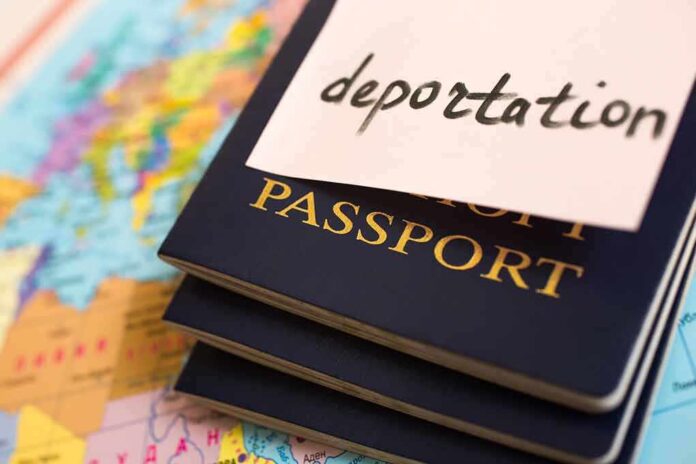Amid heated national debates on immigration policy, the Trump administration’s new deportation center at the U.S.-Mexico border presents significant implications for the future landscape of immigration enforcement.
Quick Takes
- A deportation center accommodating 10,000 migrants will be built at Fort Bliss, Texas.
- The proposal aligns with efforts to revert Biden-era immigration policies.
- The facility awaits approval from the Office of the Secretary of Defense.
- The Department of Homeland Security will oversee operations, alongside ICE and U.S. Customs and Border Protection.
Deportation Center Location and Plans
The planned migrant deportation center will be built at Fort Bliss, located in El Paso, Texas. Positioned off Montana Avenue and George Dieter Drive, the site is near an existing ICE facility. The facility aims to accommodate up to 10,000 migrants awaiting deportation, illustrating a considerable expansion in American immigration infrastructure.
U.S. Secretary of the Army Daniel P. Driscoll has confirmed that plans for construction are imminent, contingent on receiving the necessary approval from the Office of the Secretary of Defense. Construction preparations are expected to commence shortly once all approvals are granted. The deployment aligns with promises to crackdown on immigration and restore the previous administration’s policies.
By Jack Healy and Tim Arango
Reporting from Aurora, Colo.March 25, 2025
The crumbling apartments in Aurora, Colo., that President Trump seized on to insist the city had been overrun by Venezuelan street gangs are now boarded up and nearly empty. But in one building, the…
— Paul A. Langan (@paul_durhamlang) March 26, 2025
Operational Details
The Department of Homeland Security, in collaboration with U.S. Customs and Border Protection and Immigration and Customs Enforcement, will operate the facility. The initiative responds to an increasing need for efficient deportation proceedings, highlighting the administration’s aim to manage immigration more effectively. The specific demographics of the migrants being housed at the center have not been confirmed yet. This ambiguity invites further scrutiny regarding the treatment and rights of detainees.
“The process of preparing it and getting it ready to be built out will start to occur any day. This is such an incredibly important mission. We believe to keep the American people safe,” said U.S. Secretary of the Army Daniel P. Driscoll.
This project is part of a broader strategy to expand deportation facilities across the country, with potential sites being considered in Utah and New York. Fort Bliss also continues to have a historical significance in housing accompanied migrant children and Afghan refugees, marking it as a focal point in the ongoing immigration discourse.
The Next Four Years: The Trump Administration’s Vision Under Agenda 47 and Project 2025
With Donald Trump in his second term, the implementation of Agenda 47 and Project 2025 marks a radical shift in American governance. These initiatives are set to reshape federal institutions,…
— Niels Groeneveld (@nigroeneveld) March 17, 2025
Impact of the Initiative
The decision to expand through this assembly marks a pivotal shift in immigration policy under President Donald Trump. While it represents a key effort to enforce border security, it has raised concerns regarding human rights and diplomatic relations with Mexico.
The facility reflects a tangible action in line with previous declarations of “mass deportations,” a move that continues to ignite debates both domestically and internationally. The implications extend beyond immigration policies, touching upon humanitarian rights and the geopolitical dynamics of the region.
Sources:
- https://www.elpasotimes.com/story/news/immigration/2025/03/28/fort-bliss-migrant-deportation-detention-site-construction-imminent-el-paso/82705077007/
- https://www.dailymail.co.uk/news/article-14555713/Trumps-plan-largest-U-S-deportation-center-10-000-migrants-wait-sent-home.html
- https://www.newsmax.com/newsfront/donald-trump-deportation-center-border/2025/03/31/id/1205080











